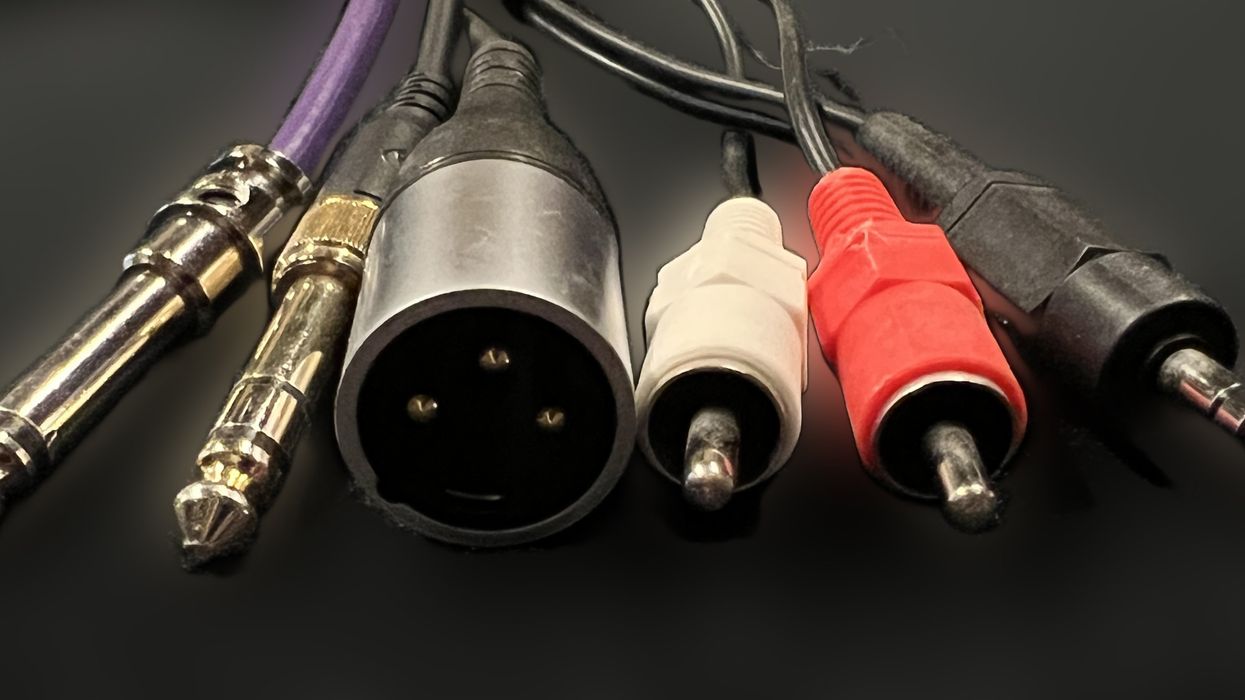Hello, and welcome to another Dojo session! This time I’d like to drill down to some audio bedrock and unearth the differences between balanced and unbalanced cables. I want to help you understand the differences and give you some strategies to greatly reduce noise (hums, buzzes, and static) in your recordings. Tighten up, the Dojo is now open.
There are many different connection types and gauges of balanced and unbalanced audio cables, and both are used to transmit audio signals from one device to another. However, they differ in their construction and performance, and understanding these differences is essential for achieving optimal audio quality.
Tipping the Scales
Unbalanced audio cables are the most common type of cable used in consumer audio equipment. This includes our beloved 1/4" TS (tip-sleeve) instrument and speaker cables, RCA, and TRS (tip-ring-sleeve) 3.5 mm and 1/4" headphone cables. The first two kinds of cables consist of two wires—a signal wire and a ground wire, while the headphone cables are in stereo, with three wires: left, right, and ground. Signal wires carry the audio signal, while the ground wire acts as a reference point. At the cable’s end, the tip (and in the case of headphone cables, the ring) of the plug carries the signal, while the sleeve is the ground connection.
Unbalanced cables are very limited in the distance they can transmit audio signals cleanly (preferably less than 20 feet). The longer the cable, the less high frequencies, and the more susceptible it is to noise and interference from external sources—like electromagnetic fields created by other electronic devices nearby (amps, synths, drum machines, outboard gear, cell phones, computers, televisions, etc.) and radio frequency interference.
Balancing the Scales
Balanced audio cables, on the other hand, which include XLR and balanced 1/4" TRS types of connectors, are designed to reduce interference and improve audio quality. They always consist of three wires—two signal wires and a ground wire. Note that while some unbalanced cables have three wires, the two signal wires in balanced cables carry the same audio signal, with one flipped 180 degrees out of phase, making them balanced mono as opposed to unbalanced stereo. Balanced cables are ideal for use in recording studios and live sound because they are capable of transmitting audio signals over longer distances (several hundred feet) without introducing noise or hum.
How? Without getting too technical, when the audio signal is split into two separate, identical paths across the two signal wires (with one being out of phase), and then recombined in phase once again, the resultant signal is amplified, and any noise that was present is canceled out. This includes 60 Hz buzz, hum (ground loops), white noise (thermal sound), digital clock jitter, and more.
They Look the Same, but Are They?
One mistake that’s easy to make is to confuse an unbalanced stereo headphone cable with a balanced mono TRS cable, as they both look the same and both have three wires. But if you tried to connect your unbalanced stereo cable output from your smartphone or tablet to a balanced input of a mixer, anything from the center of the stereo field (most likely the main vocals, kick, snare, and bass instruments) will be canceled, because the balanced input will sum both the left and right from the stereo cable, and anything common to both will be 180 degrees out of phase. Essentially, the balanced input will treat the center image as “noise” and remove it.
Can I Convert Balanced Into Unbalanced and Vice Versa?
Yes, you can, and that’s exactly what DI (direct injection) boxes and reamp boxes do. A DI box will convert unbalanced instrument level signals to balanced line level signals and reamp boxes do the opposite—balanced line levels to unbalanced instrument levels. If you’re unfamiliar with these devices and how they work, check out my Dojo video on how to reamp your guitar.
How to Reamp Your Guitar | Recording Dojo
Until next time, namaste and keep making your music!

















